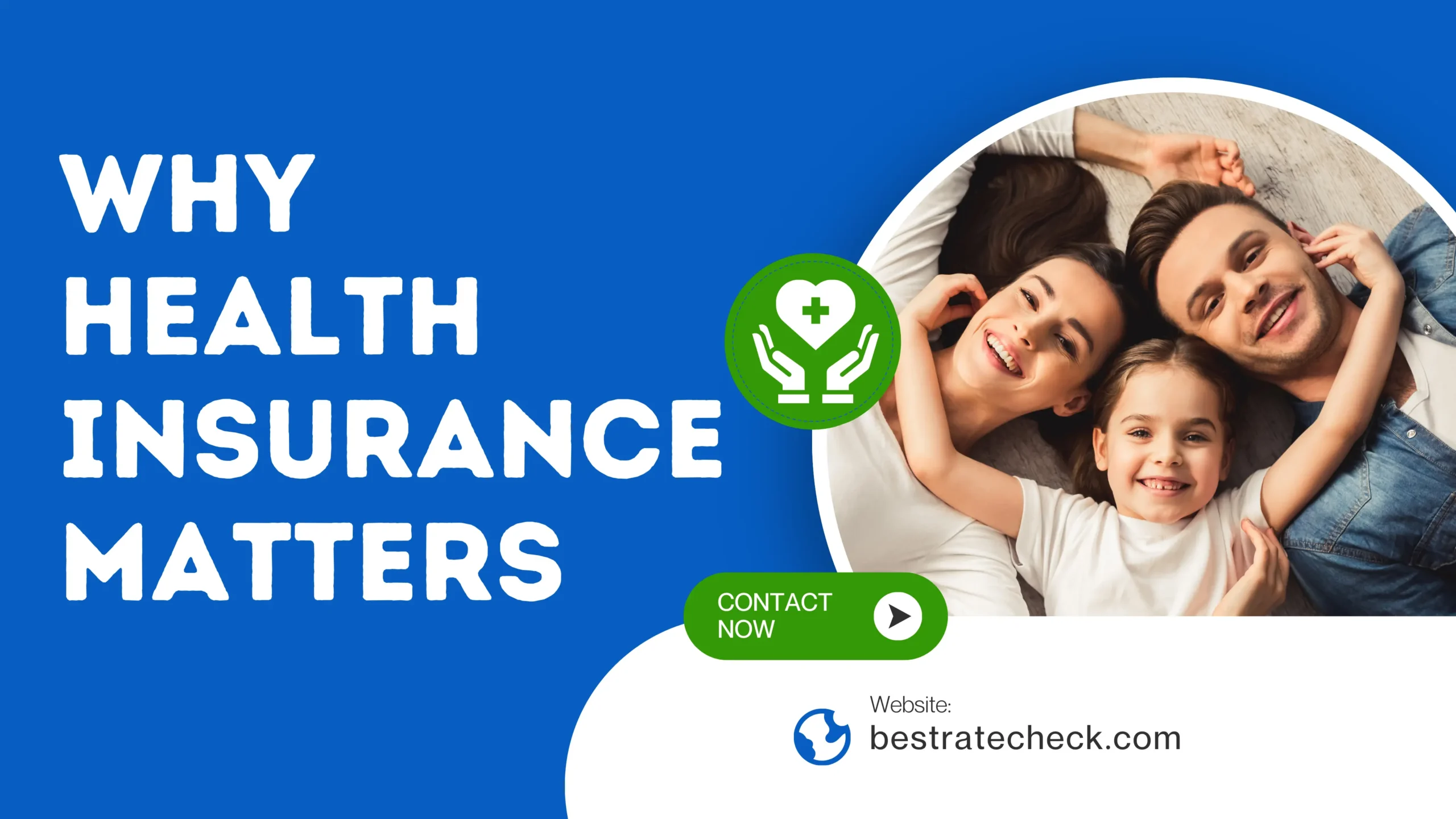3 in every 10 people with chronic health problems say that they’ve “skipped doses” or “not filled prescriptions at all” because the costs of prescription drugs were too high. Plus, at least 1 in 4 U.S. adults have health coverage all year but they’re underinsured, so high out-of-pocket costs.
Individuals are either skipping the needed care, or they’re taking on medical debt to pay for the skyrocketing costs that come along. But, it doesn’t have to be this way.
The Affordable Care Act (ACA) has changed things a lot. We’ll tell you how, but let’s understand some of the insurance jargon first. It will help you compare and choose the right coverage.
What is health insurance?
Health insurance companies let you pay a recurring cost called “premium” every month in exchange for paying for some or all your healthcare costs. Generally, health insurances last for a year, covering any health-related expenses you face during that period.
You can get coverage through public programs like Medicaid and Medicare, or by purchasing from a private insurance provider.
What do health insurance plans cover?
Health insurance plans offer different coverage options, and you can choose the categories you want coverage for—partially or completely. Usually, expenses related to illness, injury, pregnancy, and preventive care like vaccines, screening, and check-ups are paid for in most plans.
However, note the amount of coverage offered for each essential health benefit will vary, depending on the type of coverage and insurance company you choose.
What health insurances don’t include
While essential healthcare costs are covered, some services may not be included:
- Adult dental services
- Vision services
- Medical marijuana
Do I really need health insurance?
Having health insurance is a significant relief when you face a medical emergency. The coverage helps you pay for costs that would’ve otherwise robbed you of hard-earned savings. Without health insurance, you may need to face large medical bills, causing financial strain.
For example, a broken leg costs you $7,500, and the hospital will charge you a whopping $30,000 for merely 3 nights of stay! Paying an upfront amount like this is overwhelming for most of us. Due to concerns about the cost, some people avoid seeing a physician even when they’re really sick.
In the long run, this is not healthy for you, your body, and your loved ones. Staying insured helps you tackle any unexpected medical expenses that come your way. Sure, it is not compulsory to get health insurance, but it is always a recommended move for your well-being.
Moreover, getting insured is more affordable than you might think. You may be able to get coverage through your employer as well, lowering the overall cost for you.
Types of health insurance
Different types of health insurance meet different needs and preferences. Sometimes they’re categorised using metal levels, like Platinum, Gold, Silver, and Bronze. As you move up the metal level, out-of-pocket costs decrease.
Apart from that, health insurances can be of the following types:
- Health Maintenance Organizations (HMOs)
- Preferred Provider Organizations (PPOs)
- Point of Service (POS) plans
- Exclusive Provider Organizations (EPOs)
- High-Deductible Health Plans (HDHPs)
Premium, deductible, copay, & insurance
Both the insurer and insured have some financial responsibilities when it comes to health insurance. And there are terms that you should know:
- Premium: This is a monthly payment you make for keeping your insurance active. If you don’t pay this amount, your insurance may collapse.
- Deductible: This is a set amount you need to pay towards your medical expenses before your insurer covers the larger portion. For example, if you have a $1,000 deductible, you must pay that amount. Above that, the costs will be covered through your insurance.
- Copay: Copayment is a fixed amount you pay for health care at the time of service. For example, you may need to copay $25 every time you’re seeing your primary physician, $10 copay for each monthly medication, and $250 for an emergency room visit.
- Coinsurance: This is a percentage of any medical charge you pay. It applies after you’ve met the deductible amount. For example, if you have a coinsurance of 20%, your health insurance will cover 80 percent of the total costs.
How do I choose the right health insurance?
Everyone has different needs, financial situations, and health conditions. So what is the right plan for someone may not be perfect for you. It is therefore important that you consider your options.
If your employer is sponsoring health insurance for you, the plan will usually cost less than the ones in the marketplace. You also don’t need to use the government insurance exchanges (unless looking for an alternative plan).
Next, choose from the different types of insurance plans. They all have different out-of-pocket costs. HMOs and EPOs have lower costs that you pay for, whereas PPOs and POSs higher.
Once you have selected the type, review the doctors, clinics, and medications that are covered. Understand copayments, deductibles, and out-of-pocket costs if any. Lastly, consider any chronic conditions you have, your financial situation, and the monthly premium costs.
You can visit healthcare.gov for useful online resources. Also, websites like Best Rate Check have only the best health insurance providers, which you can compare and choose from.
When is the best time to enroll?
The best time you can get yourself enrolled for health insurance is during the Open Enrollment period. For most states, this starts from November 1, up through January 16. During this period, you can sign up for health insurance, adjust your current plan, or cancel your plan. Even though you miss this period, you can qualify for a Special Enrollment Period (SEP), due to a life event like getting married, moving to a new coverage area, or losing job-based health coverage.
Health insurance vs. paying out-of-pocket
Source: Investopedia
Is getting health insurance better or should you pay for medical expenses yourself? On an average, uninsured people pay less out-of-pocket costs, because they use less costly and fewer services. But, they’re likely to pay more compared to their income, and overall in total.
Usually, despite having health insurance, you’ll need to pay some share of your medical bills. As we discussed above, the out-of-pocket expenses include “copay” and “coinsurance”.
However, there is also something called an “out-of-pocket maximum”. Once you have paid a certain amount, all medical expenses for the rest of the year are covered 100% by your insurer.
Now, should you take health insurance or not? It is like a gamble.
If you’re a healthy individual, you may think that having health insurance is an unnecessary cost due to the monthly premiums. But, if someday a huge medical cost happens, it can leave you financially strained without health insurance.
How do pre-existing conditions affect my coverage?
Health insurance companies cannot refuse to offer you coverage or charge you more just because you have pre-existing conditions like asthma, diabetes, cancer, or even pregnancy. Once you have the insurance, they cannot refuse to pay for your expenses. Unless, if your plan is “grandfathered” (in place before March 23, 2010), some exceptions will apply.
In this way, health insurance differs from life insurance, where you are charged higher premiums if you have a pre-existing health condition or use tobacco, alcohol, or drugs.
Common misconceptions about health insurance
Let’s debunk some of the common myths we have regarding health insurance:
- Health insurance is unnecessary for young and healthy individuals.
While this is true to some extent, unexpected health issues can come up at any age. To make sure that you’re financially protected at all times, getting health insurance is a must.
- Health insurance covers all medical expenses.
In reality, health insurances come with deductibles, copayments, and coinsurance costs. So, not all of your treatments are paid for. Check if there is a maximum out-of-pocket cost.
- Employer-sponsored health insurance is sufficient.
Another common misconception is this one. But, employer-sponsored health insurance often has very limited coverage. Also, the expenses for any dependent family members won’t be covered. Plus, if you leave that job, you’ll be out of coverage.
- Health insurance is overpriced and not worth the investment.
This is simply not true. Purchasing health insurance when you’re young is a smart financial move. It is more affordable, and the long-term benefits are great.
- Health insurance is only beneficial if a claim is made.
Even without any claims, the peace of mind and security health insurance offers are worth the cost.
How can I save on health insurance premiums?
There are a few ways you can save money on your health insurance premiums and here’s how:
- Eligible for Medicaid or CHIP? If your income qualifies, you might be eligible for Medicaid or Children’s Health Insurance Program (CHIP). These plans reduce your costs significantly.
- Apply for Premium Tax Credits: If you purchase through the Health Insurance Marketplace, you can qualify for premium tax credits, lowering your monthly premiums.
- Choose High-Deductible Health Plan (HDHP): This plan lowers your monthly premiums. Though, you will need to pay a higher deductible.
- Use Health Savings Account (HSA): An HSA allows you to save pre-tax dollars. These can be used for medical costs, and lower the out-of-pocket costs with an HDHP.
- Consider Catastrophic Plan: If you’re under 30, or qualify for a financial hardship exemption, catastrophic plan may be a good option with lower premiums.
- Stay In-Network: Whichever plan you choose, use the in-network providers to save money.
- Family Floater Plan: Instead of buying separate health insurance for each family member, consider getting a family floater plan, which is often less expensive.
- Flexible Spending Account (FSA): An FSA allows you to set aside pre-tax dollars.
- Employer Contributions: Ask your employer to offer you a Section 125 plan or health reimbursement arrangement (HRA). Your premiums will be tax-free.
- Tax Deductions: Any contributions you make towards HSAs and FSAs are tax-deductible.
Affordable Care Act
The Affordable Care Act (ACA), launched on 23rd March 2010, offers better healthcare to nearly 50 million people. Quality healthcare has now become affordable for millions of Americans.
Under this law, insurers cannot deny you health insurance if you have pre-existing health conditions. The costs of getting insured are lower, with quality of health care improved. Consumers get subsidies such as premium tax credits.
And, young adults can stay on their parents’ plans until they turn 26. Households with an income below 138% of federal poverty level are automatically covered in Medicaid.
Best Rate Check: Best Health Insurance Rates
Tired of researching for a good health insurance provider? Take a look at some of the best health insurances Best Rate Check has selected. You’ll find the coverage you need at the best possible rates. All you need to do is apply, and wait for the team to connect with you.
Getting health insurance may sound like an unnecessary cost right now, but when a major health crisis happens, you would have health insurance to cover the high expenses!
Frequently Asked Questions
Health insurances usually don’t cover treatments that are experimental. Only proven treatments that are known to be safe and effective are covered.
You should contact your insurance company to understand the specific requirements and submit the necessary documentation, such as your medical history, symptoms, test results, and other treatments you have tried.
Evaluation and management visits, mental health counseling, and preventive health screenings via telehealth are covered.
Review the letter or form from your insurance company that explains why the claim was denied. Then, file an internal appeal. Lastly, seek an external review by an independent third party.
In the context of emergencies, out-of-network care can be effectively reclassified as in-network for coverage purposes.



